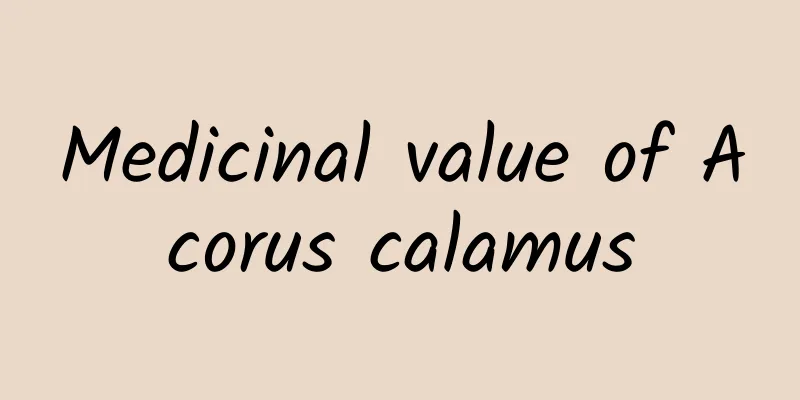The efficacy and function of Toona white bark

|
The essence of traditional Chinese medicine is to treat both the symptoms and the root cause. Compared with Western medicine, the effects and efficacy of traditional Chinese medicine are much better. The same is true for the Chinese medicinal herb Toona sinensis bark. Here we will introduce the effects and functions of the Chinese medicinal herb Toona sinensis bark. [Other names] Toona sinensis bark (Experienced Prescriptions), Spring Toona sinensis bark (Classification of Herbal Properties). [Source] It is the phloem of the bark or root bark of the Toona sinensis plant of the Meliaceae family. It can be harvested throughout the year, but is easiest to peel in spring when there is plenty of water. The dry bark can be peeled off from the tree directly; the root bark requires the roots to be dug out first, the black skin on the outside scraped off, and then it is gently hit with a wooden stick to loosen the bark and wood before peeling it off; it should be dried on its back in the sun, otherwise it will easily become moldy and turn black. [Original form] Toona sinensis (Experience Prescriptions), also known as: Pig Toon (Meng Shen), Red Toon (Illustrated Catalogue of Plant Names and Realities), Spring Sun Tree, Spring Vegetable Tree, Toon Bud Tree, White Toon, and Fragrant Tree. [Habitat distribution] Planted all over the country. 【Properties】 ① White bark of Toona sinensis root (Experienced Prescription) 【Chemical composition】 Bark contains tannin, sterols and tannins. [Preparation] Chinese toon bark: remove the cork bark, soak in clean water, take out, soak thoroughly, cut into strips or cubes in time, and dry in the sun. Stir-fried white toon bark: first sprinkle the bran into the pot, heat until smoke rises, then pour in the white toon bark, stir-fry until both sides are browned, take out, sieve out the bran, and let cool. (For every 100 catties of white bark, use 10 catties of bran) 【Nature and flavor】 Bitter, cool. 【Meridian】 "Depei Materia Medica": "enters the blood of the hand and foot yangming meridians." 【Functions and indications】Removing heat, drying dampness, astringing the intestines, stopping bleeding, and killing insects. It is used to treat chronic diarrhea, chronic dysentery, intestinal wind with bloody stool, metrorrhagia, leukorrhea, spermatorrhea, leukorrhea, malnutrition, ascariasis, and sores. [Usage and Dosage] For oral use: decocted in water, 2 to 4 qian; or made into pills or powder. For external use: decoct in water for washing or make ointment for application. 【Note】 "Compendium of Materia Medica" states: "It should not be used by people with spleen and stomach deficiency and coldness. It should also be avoided by people with metrorrhagia and true yin deficiency of the kidney, because it is dry. It should not be used immediately by people with leucorrhea and accumulated qi that has not been completely eliminated." [Additional prescription] ① Treating restless dysentery, which occurs day and night, has a fishy smell that cannot be approached, and causes pain in the navel and abdomen, and is ineffective with other medicines: 50 cents of Terminalia chebula (without the core and tip), 1 liang of white bark of Chinese toon root, and 30 mother cloves. Grind the above ingredients into fine powder and make into balls as big as sycamore seeds with vinegar paste. Take 50 pills each time, with a little vinegar in old rice soup, at 5 a.m., three times in three days. (Helile Pills from "Discussion on the Spleen and Stomach") 【Discussions by various scholars】 ① Zhu Zhenheng: "The white bark of the Chinese toon root is cool in nature and can astringe blood. It is used for all diseases caused by dampness and heat, such as diarrhea, turbid vaginal discharge, slippery sperm, and nocturnal emission. It has the functions of drying up dampness and removing stale phlegm from the lungs and stomach. It can also remove dampness and strengthen the intestines when treating diarrhea. However, it should not be used immediately if the stagnant qi of dysentery has not been completely eliminated. It is suitable for pills and powders, and can also be decocted and taken without any harm. I always use it in the form of fried and ground paste pills, and make soup when treating patients. It is called Guchang Pills." [Remarks] Toona sinensis and Catalpa ovata (Ailanthus altissima) are plants from two different families, but are often described together in the herbal books of all dynasties. The functions of the two are basically the same, and the commercial products also generally refer to the bark of Toona sinensis and Catalpa ovata as "Toona white bark" or "Toona root bark". Currently, the more widely used one is Catalpa white bark, which is only used in Shaanxi, Sichuan, Hubei, Guizhou and other places. See the entry for "Calala white bark". 【Excerpt】 《*Dictionary》 [Source] Toona sinensis was first recorded in the New Compendium of Materia Medica, which said: "Toona sinensis and Ailanthus altissima (stinking toon) are similar in shape, but Ailanthus altissima is sparse and Toona sinensis is solid." "Compendium of Materia Medica" states: "Toona sinensis, Ailanthus altissima and Castanopsis chinensis are three species of the same tree. Toona sinensis has fine bark, solid flesh and tender red texture, and sweet and fragrant leaves that can be eaten; Ailanthus altissima has rough bark, hollow flesh and white texture, and its leaves have a bad odor, and people may eat them in poor years; Castanopsis altissima is Ailanthus altissima that grows in the mountains, and its wood is also hollow and large, and it may be used by carpenters, but it looks rotten when scratched, so the ancients regarded it as a useless wood, unlike Toona sinensis, which is solid and can be used as a pillar." "Illustrated Records of Plant Names and Realities" states: "Toona sinensis is Toona sinensis. It has sweet leaves and red wood texture, and is commonly known as red Toona sinensis." In summary, the so-called Toona sinensis in ancient times refers to the current fragrant Toona sinensis of the Meliaceae family. Through the detailed introduction of the Chinese medicine Toona Sinensis bark in the above article, we know that Toona Sinensis bark has many functions and effects and is extremely beneficial to the body. So if you have related symptoms, you might as well give it a try. |
<<: The efficacy and function of wind vine grass
>>: The efficacy and function of Chinese toon bark
Recommend
Can eating more duck eggs lower blood pressure? The truth is...
Rumor: "People with high blood pressure shou...
The efficacy and function of the golden iron lock
For Chinese medicinal materials such as golden ir...
What are the medicinal values of wolfberry?
Lycium barbarum can be considered a health produc...
As soon as summer comes, the "little bumps" that grow on the back, what are they?
alert! alert! alert! ...... ...... Source: Dr. Cu...
What is good to drink with Amomum villosum?
No one has heard of Amomum villosum. It is a plan...
The efficacy and function of Amaranthus
In our lives, Amaranthus tricolor has attracted o...
Can Osmanthus grow hair?
A large number of people in life are troubled by ...
Home appliances require direct current, but why do we use alternating current at home?
We know that electricity can be divided into alte...
Digging the root | Is hoarding a habit? Be careful, you may have this disease. Let's see if you have these symptoms
gossip Many people are reluctant to throw away th...
The effect of Chinese herbal medicine on kidney health
What is the most important thing about Chinese me...
The efficacy and function of Corydalis jejuni
Many people are not very clear about the Pearly Y...
The miracle drug for treating diarrhea is so ordinary
When I was 2 years old, I had severe diarrhea. My...
Why can't an adult's heart regenerate? Scientists: Actively refuse
The liver has the greatest regenerative capacity ...
The role of mothballs
In China, people put mothballs in wardrobes to re...
40℃ high temperature is coming! You need to know these fire prevention measures!
The Central Meteorological Observatory warns that...









